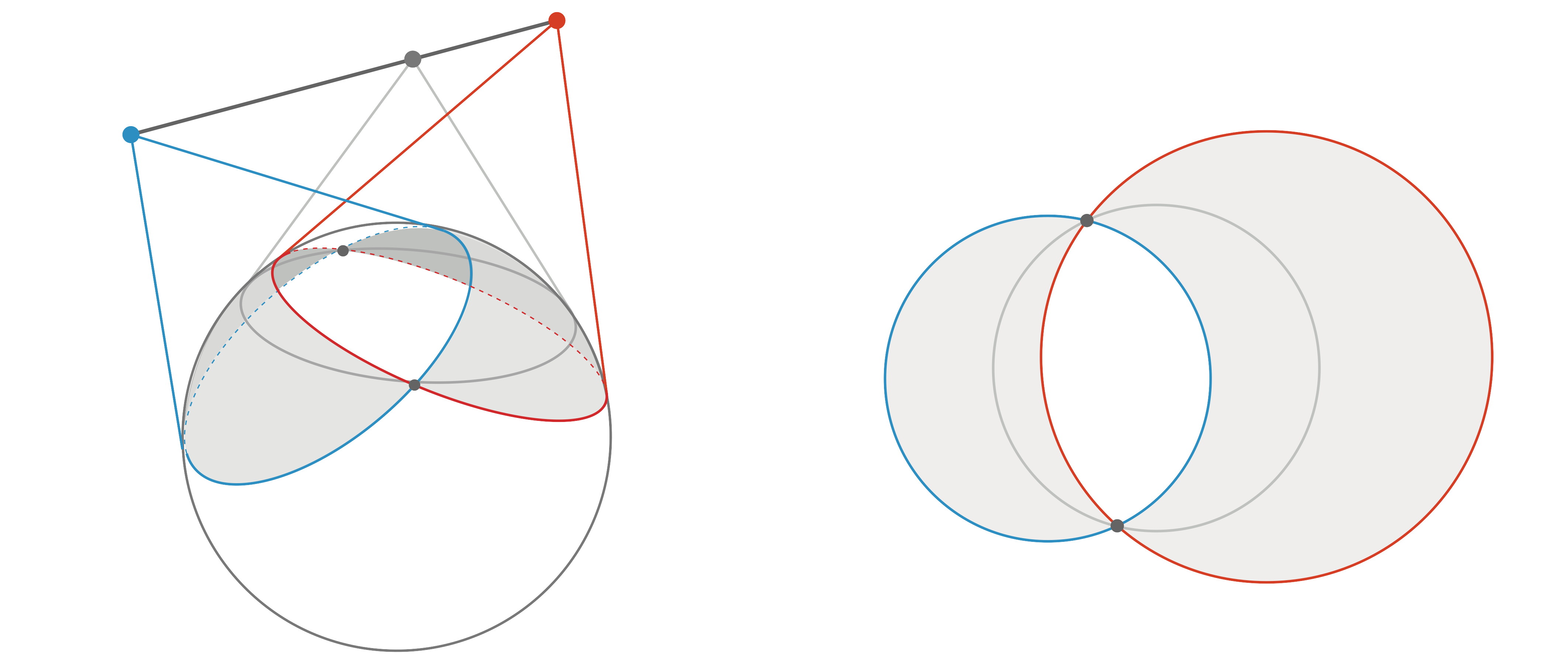James Wenk and I just finished a paper proving Zalgaller's sphere inspection conjecture for closed curves:
Shortest closed curve to inspect a sphere.
We show that in $R^3$ any closed curve $\gamma$ which inspects the unit sphere $S^2$, i.e., lies outside $S^2$ and contains $S^2$ within its convex hull, has length $L(\gamma)\geq 4\pi$. Equality holds only when $\gamma$ is composed of 4 semicircles of length $\pi$, arranged in the shape of a baseball seam, as conjectured by Zalgaller in 1996.
The proof, which runs 38 pages, uses some notions from the earlier work on this problem which I had mentioned in my last post below, together with other ideas from integral geometry, convex analysis, geometric measure theory, and geometric knot theory. Furthermore, we derive a number of formulas for inspection efficiency of curves, which can be verified with the aid of a Mathematica notebook which we have provided.
The basic approach is as follows.

Let $\gamma\colon[a,b]\to R^3$ be a closed rectifiable curve inspecting $S^2$. As I had mentioned in my last post, the horizon of $\gamma$ is defined as
$$
H(\gamma):=\int_{p\in S^2} \#\big(\gamma^{-1}(T_pS^2)\big)\, dp,
$$
i.e., the measure in $S^2$ of all points $p$ counted with multiplicity where the tangent plane $T_p S^2$ intersects $\gamma$.
The horizon of a line segment, for instance, is the area of the region illustrated in the picture above. In the current paper we define the (inspection) efficiency of $\gamma$ as
$$
E(\gamma):=\frac{H(\gamma)}{L(\gamma)}.
$$
We want to show that $L(\gamma)\geq 4\pi$. Since $\gamma$ is closed, $H(\gamma)\geq 8\pi$. So it suffices to show that $E(\gamma)\leq 2$. To this end we note that, since $H$ is additive, for any partition of $\gamma$ into subsets $\gamma_i$, $i\in I$,
$$
E(\gamma)= \sum_i \frac{H(\gamma_i)}{L(\gamma)}=\sum_i \frac{L(\gamma_i)}{L(\gamma)} E(\gamma_i)\leq \sup_i E(\gamma_i) .
$$
So the key to solving the problem would be to construct a partition with $E(\gamma_i)\leq 2$ for all $i\in I$.
To construct the desired partition we may assume that $\gamma$ has minimal length. Then we connect all points of $\gamma$ to the origin $o$ of $R^3$ to obtain a conical surface. This surface can be isometrically developed into the plane to yield a curve $\tilde\gamma\colon[a,b]\to R^2$ which is called the (cone) unfolding of $\gamma$. This operation goes back to a paper of Cantarella, Kusner, and Sullivan on thickness of knots. It turns out that $$
E(\gamma)=E(\tilde\gamma).
$$
Furthermore, since $\gamma$ is minimal, it follows that $\tilde\gamma$ is locally convex with respect to $o$. Consequently it admits a partition into segments we call spirals, which are maximal subsets of $\tilde\gamma$ with monotone distance from $o$. We prove that the efficiency of any spiral is at most $2$ which yields the desired inequality $L(\gamma)\leq 4\pi$. The proof is based on a computation of $E$ for line segments, polygonal approximations, and a variational procedure.
The above arguments fill the first half of the paper. The second half is devoted to characterizing the case where $L(\gamma)=4\pi$. This part of the paper gets quite a bit more analytical, and requires more precise estimates for efficiency. The main idea here is that if $L(\gamma)=4\pi$, then $E(\gamma)=2$ which in turn yields that $E(\tilde\gamma_i)=2$ for all the spirals in the unfolding of $\gamma$. We show that $E(\tilde\gamma_i)=2$ only when $\tilde\gamma_i$ has constant distance $\sqrt2$ from $o$, which in turn yields that $\gamma$ must have constant distance $\sqrt2$ from $o$ as well, or lie on a sphere of radius $\sqrt2$. Finally we show that $\gamma$ must be composed of $4$ semicircles using a Crofton type formula of Blaschke-Santalo for length of spherical curves, and a technique from the proofs of the classical $4$ vertex theorem, which has been developed further by Umehara and Thorbergsson.
In short, as had been anticipated at the end of my last post, the proof of the full result did require substantial effort beyond the estimates obtained in the earlier work. Zalgaller's conjectures for open inspection curves still remain unresolved. It is also natural to consider higher dimensional versions of the problem. Some of the techniques discussed above apply in all dimensions, but more ideas would be needed to extend the result.
Update (July 2021): The proof has been simplified and the paper, which has been shortened to 25 pages, has been accepted for publication in Crelle's journal.


